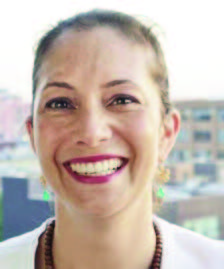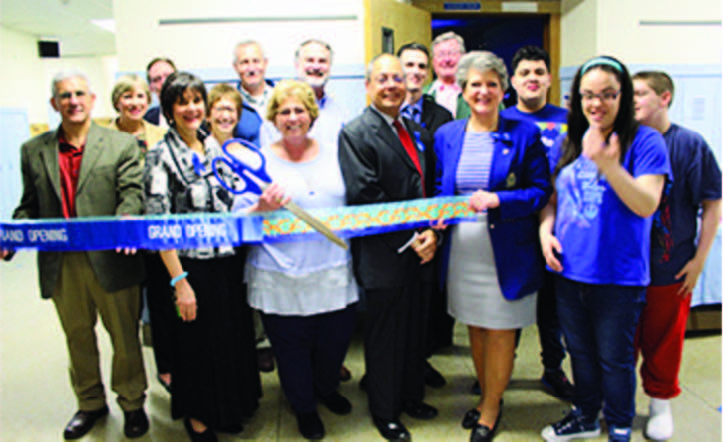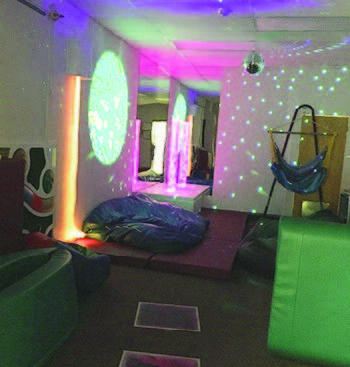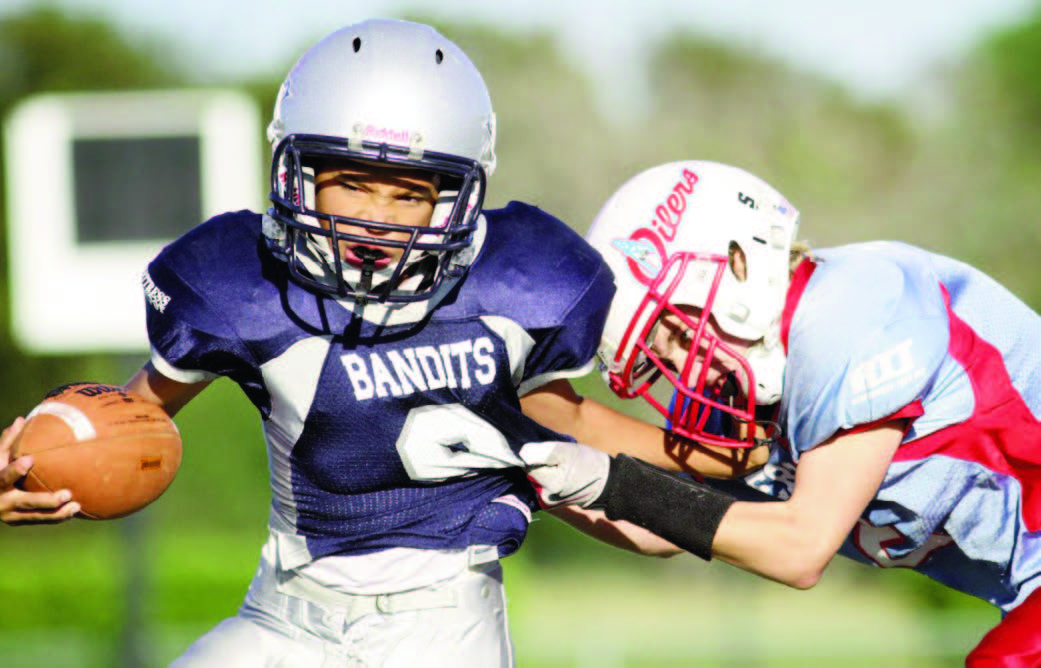Council for Exceptional Children Announces General Session Speakers
The Council for Exceptional Children (CEC) recently announced that Carla Tantillo Philibert and Dan Habib will be the CEC 2019 Convention & Expo General Session Speakers.
Carla Tantillo Philibert is a recognized expert on social-emotional learning (SEL), mindfulness, and yoga practices in schools. Philibert will focus on SEL and building strong teacher-student relationships. Dan Habib is an award-winning filmmaker and presidential appointee. Habib will highlight current trends in education that point to a future in which people of all abilities are included.
CEC's Convention & Expo is a professional development event for all educators. "When selecting general session speakers, we look for speakers who are engaging and motivational. We want to bring our convention attendees exciting content that makes them reflect on their profession," shared Convention Co-Chair David Bateman.
Convention Co-Chair Cindy Perras added that she is excited that Dan Habib accepted CEC's invitation to speak. "Dan Habib is inspirational and his work strongly aligns with CEC's mission and core value of inclusiveness." The convention will be held in the Indiana Convention Center in Indianapolis, from January 30 to February 2, 2019. CEC attracts more than 4,000 educators from around the world to its annual meeting. The 2019 conference will feature almost 700 sessions covering public policy, arts in special education, instructional strategies for students at risk or with learning disabilities, technology, cultural and/or linguistic diversity, and much more. The CEC is the professional association of educators dedicated to advancing the educational success of children and youth with exceptionalities that accomplishes its mission through advocacy, standards, and professional development. Learn more about CEC at cec.sped.org •


ECLC of New Jersey's Special Education School Receives Grant from Investors Bank
ECLC of New Jersey's Chatham school for students with special needs received a $1,500 grant from the Investors Foundation for a new Sensory Room to provide therapy for the growing number of students with autism.
"It was a great pleasure to personally see the great work and love given to the students of ECLC," said Investors Assistant Vice President and Chatham Branch Manager Gregory Schmidt. "I was honored to be able to provide the Grant on behalf of Investors Bank and Investors Foundation."
ECLC is celebrating its 30th year in a former Chatham public school building. During that time, the student population has dramatically changed, requiring new tools and techniques to support them. Three decades ago, ECLC students primarily were classified with learning disorders, such as dyslexia. Today, about one-third are diagnosed with autism or another disability with a behavioral component.
For students with autism and certain other disabilities, the SENSING A NEED: Elected officials showed their support for the ECLC Chatham school. ABOUT ECLC ECLC stands for offering "Education, Careers & Lifelong Community" to children and adults with special needs, including autism, Down everyday world at times can become overwhelming. Walking into a classroom might seem like walking into a crowded nightclub, with flashing lights and booming music. At any point in the day, students may start to feel overloaded and "dysregulated." In contrast, there is another group of students who are "under-reactive."
These students need to increase their alertness and activity level to succeed at school. The Sensory Room creates a new, permanent space to help students smooth out their emotional states. It creates an atmosphere of soothing calm and quiet. The room is a "Snoezelen Room" and delivers stimuli to various senses, using dim, lighting effects, color, gentle pressure, sounds, music, scents and vibration.
A therapist, teacher, or aide always accompanies students when they use the room. Students come to relax or take a break from class, when they are over-stimulated or during times of stress. They can also earn time in the room as part of their behavior plan. Each student has a customized list of activities and uses for the Sensory Room.
ECLC stands for offering "Education, Careers & Lifelong Community" to children and adults with special needs, including autism, Down everyday world at times can become overwhelming. Walking into a classroom might seem like walking into a crowded nightclub, with flashing lights and booming music. At any point in the day, students may start to feel overloaded and "dysregulated." In contrast, there is another group of students who are "under-reactive." syndrome and other developmental disabilities. ECLC was launched in 1970 as the "Early Childhood Learning Center" by a group of parents and others to provide early-intervention services to a handful of pre-school children. Today, ECLC serves more adult clients than students and that number increases with each graduating class. ECLC is an accredited, nonprofit, educating students ages 5-21 with severe learning and/or language disabilities, autism spectrum disorder, Down syndrome or multiple disabilities at two schools. Visit: eclcofnj.org

SENSING A NEED: Elected officials showed their support for the ECLC Chatham school.
BREAKING FOR SUCCESS : THE BENEFITS OF A SENSORY ROOM
The room is dimly lit when in use and quiet, calming music is played. A bubble tube light, with flowing bubbles and soft changing lights provides a multi-sensory calming environment. The equipment is highly specialized. It includes a gentle "squeeze machine" that provides deep pressure, controlled by the student. A contour "relax" chair allows students to sit in a semi-reclined position on a soft surface. There is a hammock swing to offer slow, rhythmic swinging and a gentle squeeze. Students can climb into inflatable canoe-shaped seats, which provide a steady hugging pressure. Weighted blankets are gently placed on stu dents to provide additional pressure. "As the student population has changed, our school has proactively addressed their needs," said Principal Jason Killian. "We are always looking for new ways to support our students and help them thrive. We have found tremendous success with providing sensory breaks and sensory input to help students regulate and succeed in school." Parents of children with special needs and any member of the public can arrange for a visit and tour ECLC's school at 21 Lum Ave., by contacting Principal Killian at jkillian@eclcofnj.org or (973-601-5410).

CDC Releases Guideline to Improve Care of Children with Mild Traumatic Brain Injury
The Centers for Disease Control and Prevention released new clinical recommendations for healthcare providers treating children with mild traumatic brain injury (mTBI), often referred to as concussion.

FORWARD PROGRESS: The hope is that this Guideline will lead to future studies and guidelines that further advance the care of patients of all ages with mTBI and other serious brain injuries.
The CDC Guideline on the Diagnosis and Management of Mild Traumatic Brain Injury Among Children, published today in JAMA Pediatrics, is based on the most comprehensive review of the science on pediatric mTBI to date—covering 25 years of research.
"More than 800,000 children seek care for TBI in U.S. emergency departments each year, and until today, there was no evidence-based guideline in the United States on pediatric mTBI—inclusive of all causes," said Deb Houry, MD, MPH, director of CDC's National Center for Injury Prevention and Control. "Healthcare providers will now be equipped with the knowledge and tools they need to ensure the best outcomes for their young patients who sustain an mTBI."
Offering 19 sets of clinical recommendations that cover diagnosis, prognosis, and management and treatment, the CDC Pediatric mTBI Guideline is applicable to healthcare providers in all practice settings. "We have heard from healthcare providers that they want and need consistent, current, and evidence-based guidance for diagnosing and managing mTBI.
And this guideline can help," said Houry. "However, we also designed the guideline so it can help inform efforts aimed at supporting families, sports coaches, and schools—who are all integral to keeping children safe and healthy." In developing the guideline, CDC followed a rigorous process. An extensive review of scientific literature, as well as feedback from clinical experts, the public, and partner organizations informed the development of the recommendations.
The hope is that this Guideline will lead to future studies and guidelines that further advance the care of patients of all ages with mTBI and other serious brain injuries." To help healthcare providers implement the recommendations, CDC developed supporting tools and materials. Ranging from screening forms to assess young patients to discharge instructions and recovery tips for parents, these resources will help healthcare providers take action to improve the care of young Americans with mTBI. These tools and materials are available at cdc.gov/HEADSUP.
As the nation's leading public health agency, CDC is committed to helping those at increased risk for mTBI and other serious brain injuries. There is not a one-size-fits-all approach to protecting young Americans from these injuries. However, this guideline is helping fill a critical gap aimed at improving the care of this vulnerable population. CDC works 24/7 protecting America's health, safety and security. Whether disease start at home or abroad, are curable or preventable, chronic or acute, or from human activity or deliberate attack, CDC responds to America's most pressing health threats. CDC is headquartered in Atlanta and has experts located throughout the United States and the world.•
HEADS UP: NEW CLINICAL mTBI RECOMMENDATIONS
The CDC Pediatric mTBI Guideline outlines specific actions healthcare providers can take to help young patients and their parents/caregivers, including five key practice-changing recommendations:1. Do not routinely image pediatric patients to diagnose mTBI.2.Use validated, age-appropriate symptom scales to diagnose mTBI.3.Assess for risk factors for prolonged recovery, including history of mTBI or other brain injury, severe symptom presentation immediately after the injury, and personal characteristics and family history (such as learning difficulties and family and social stressors).4. Provide patients and their parents/caregivers with instructions on returning to activity customized to their symptoms.5.Counsel patients and their parents/caregivers to return gradually to non-sports activities after no more than a 2-3 days of rest.